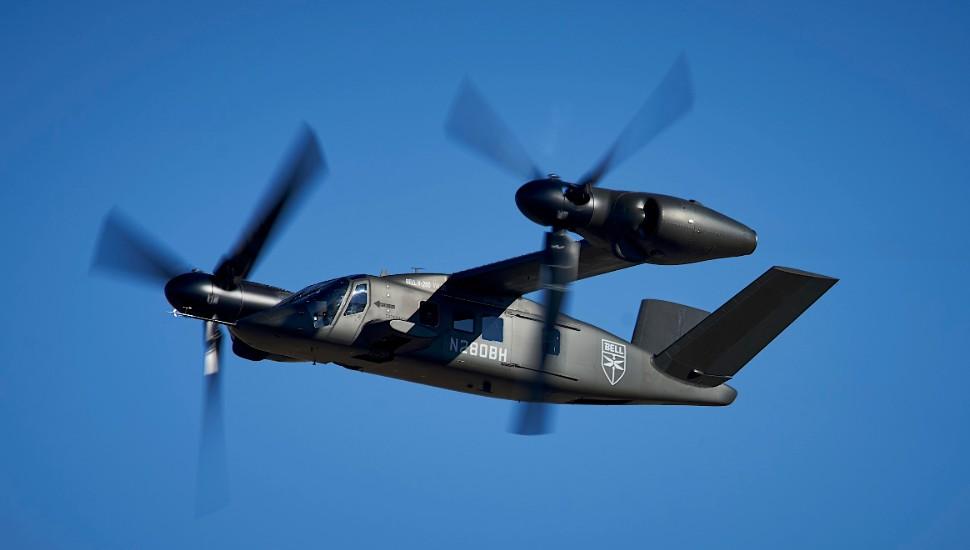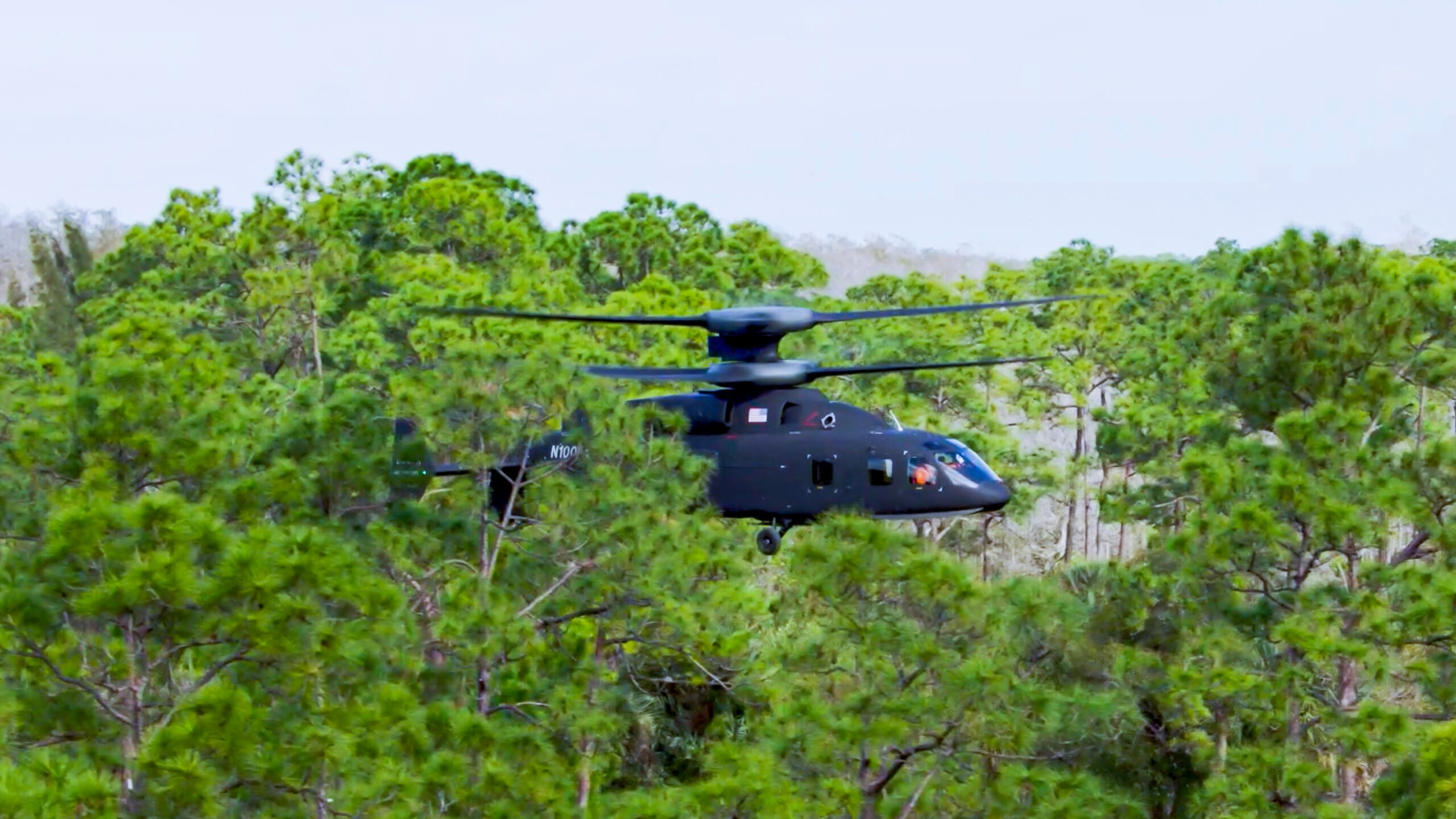The US Army recently awarded a contract for its Future Long-Range Assault Aircraft to Textron’s Bell in what will be the largest helicopter purchase by the service in 40 years. However, this has prompted the other contractor in the FLRAA contest to lodge a fierce protest.
Lockheed-owned Sikorsky challenged the contract’s award to Bell in a formal protest submitted to the Government Accountability Office (GAO).
The Future Long Range Assault Aircraft (FLRAA) contract award has been the subject of an “open protest filed today [December 28] by Sikorsky Aircraft Corporation,” said GAO.
In the FLRAA contest floated to replace the Black Hawk helicopters, the two contenders were the tilt-rotor Bell V-280 Valor and the coaxial rotor Sikorsky and Boeing Defiant X. However, Bell V-280 Valor emerged as a winner in early December.

A $232 million initial contract was awarded to Bell to cover Valor’s final digital design, which Bell created after the aircraft’s five-year development and flight testing campaign.
The design was created following the requirements of the US Army. On its part, Bell has still not commented on the protest, which would require it to halt work on its tilt-rotor aircraft.
The watchdog organization for the government underlined that a decision must be made by April 7, 2023.
Sikorsky President Paul Lemmo said in a statement, “Based on a thorough review of the information and feedback provided by the Army, Lockheed Martin Sikorsky, on behalf of Team DEFIANT, is challenging the FLRAA decision.”

Lemmo further justified the decision by saying, “The data and discussions lead us to believe the proposals were not consistently evaluated to deliver the best value in the interest of the Army, our soldiers, and American taxpayers.
The critical importance of the FLRAA mission to the Army and our nation requires the most capable, affordable, and lowest-risk solution. We remain confident DEFIANT X is the transformational aircraft the Army requires to accomplish its complex missions today and well into the future.”
The timing of the protest by Sikorsky is also significant as it comes when the US Navy has announced a full-scale production of its CH-53K King Stallion helicopters for the US Marine Corps after a long and arduous journey.
FLRAA Contest Is Not Over Yet: V-280 Vs. Defiant X
When the contract was awarded to Bell earlier this month, Army acquisition chief Doug Bush said that the service “anticipated [a protest] potentially happening and [has] accounted for that in our timelines.” His statement is not without merit, as the contest was unique.
From the outset, the FLRAA was a competition between two radically different designs and airframes competing to fill the same footprint as the Black Hawk. One was developing a tilt-rotor concept that was an advancement of the V-22 Osprey and was tailored to the Army’s particular needs.
In contrast, the other was an up-scaled configuration that Sikorsky’s X-2 program created using a combination of proven yet relatively novel technologies.
The V-280 has accomplished several significant milestones during its lengthy development process. The V-280 first took to the air in 2017, reached 200 knots, and performed low-speed agility testing and autonomy demonstrations in 2019.
The V-280 finished Army test flights, survivability evaluations, and a “sling load” demonstration in 2020. In 2021, the aircraft completed its 215th flight hour.
The Bell V-280 Valor provides higher flight performance and lifespan sustainability by combining the power and range of a turboprop with greater advanced agility than a conventional helicopter.
According to Bell Textron, this weapon system was created to transform the US Army overmatch in multi-domain operations. It was designed to revolutionize the reach and effectiveness of each operation while providing unparalleled agility, decreased downtime, and simplicity of field maintenance.
The launch of Defiant was delayed until March 2019 partly because of design concerns, including issues with its counter-rotating stiff rotor technology. Before Defiant could take flight, Boeing had to rebuild the rigid rotors due to difficulties scaling them up to lift a 30,000-pound aircraft.
Additionally, the aircraft was momentarily grounded in 2019, so the Defiant team could modify the drive train system to prevent “bearing creep,” discovered while operating the ground-based propulsion system test bed, or PTSB.
Soon after, more than 60 hours of flying experience, hundreds of hours of ground testing, and a following flight test campaign were all accumulated. SB>1 continued to outperform conventional helicopters, flying at a level altitude of more than 245 knots. Its pusher propeller and stiff coaxial rotors let it reach those speeds.
According to the announcement, the Defiant platform has previously displayed “mission-relevant” cargo capacity by hauling the 5,300-pound Guided Multiple Launch Rocket System. It also showed low-speed agility with fly-by-wire controls.
“Defiant X delivers speed where it matters, survivability, unsurpassed power, maneuverability, superior handling in any environment, and lower lifecycle costs – while operating in the same footprint as the Sikorsky UH-60 Black Hawk,” said a joint statement from Mark Cherry, Vice-President and General Manager of Boeing and Paul Lemmo, President of Sikorsky.
However, it lost out to Bell nonetheless. The V-280 is often called a “cool design” and the “best of both worlds.”
It carries on the ground-breaking tradition of the tilt-rotor, where massive propellers on the wingtips rotate on a full 2D upward and forward axis.
After reaching the required altitude, the forward position forces the air-thrust backward to propel the aircraft forward like a plane. The former enables the aircraft to lift off and hover like a helicopter, as noted by EurAsian Times.
Earlier, Bell said that the production process for the V-280 has already been improved, with a 40% cost reduction and an 80% lead time reduction for the fabrication of its mast portion.
It was also notified that the company had tested software enabling Valor to fly autonomously without a human pilot (a test pilot remained aboard as a safety backup). Sikorsky-Boeing has experimented with such software in simulations but not in the real Defiant aircraft, at least as of February 2022.
The protest lodged by Sikorsky has essentially revived the contest again, as no work could be performed unless a decision is made. Even if Sikorsky loses this, it still has a chance to win the Future Attack Reconnaissance Aircraft (FARA).
For the FARA contract, Sikorsky is promoting the Raider X based on the S-97 Raider, which has a similar configuration as Defiant, while Bell is promoting the 360 Invictus, a typical single-main-rotor design.
- Contact the author at sakshi.tiwari9555 (at) gmail.com
- Follow EurAsian Times on Google News




